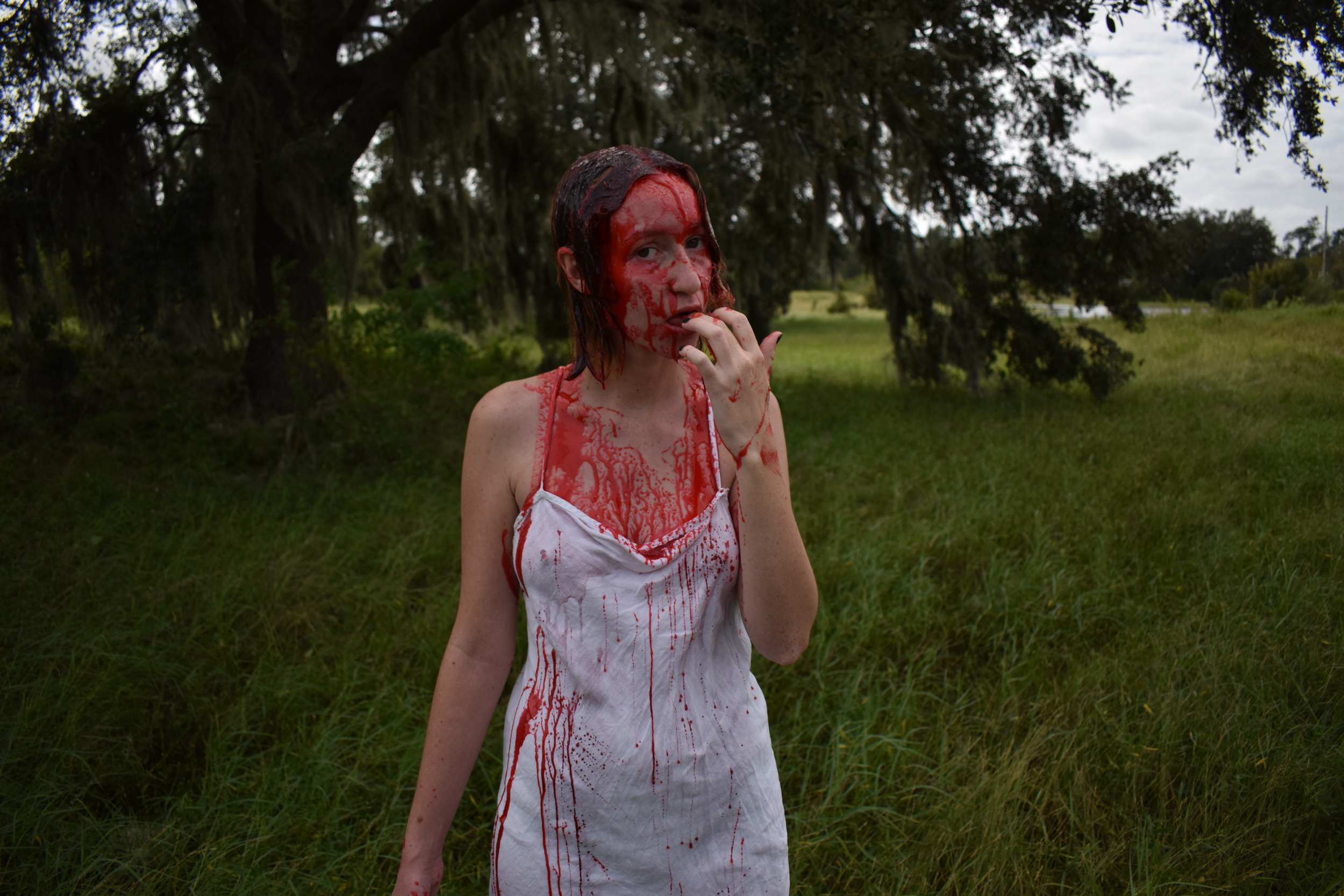Good For Her: Monster Women in Film
Spoilers for “The Substance” below.
Smooth Skin. Tight Ass. Bouncy Hair.
The “movie woman” has it all, and more. She’s skinnier than you, prettier than you, better than you. Don’t forget it.
Megan Fox in “Transformers,” arching over an open car hood, cropped shirt showing off the six-pack you’ll never have. Florence Pugh in “Oppenheimer, adds a seductive edge to the historical film- in a movie dominated by male actors, a woman is left to be a wife or a mistress. A youthful Margaret Qualley in “Once Upon a Time in Hollywood,” posed as an object of desire for a middle-aged Brad Pitt.
Wait. No.
Megan Fox in “Jennifer’s Body,” vomiting vile black sludge and shoveling raw meat into her mouth in handfuls. Florence Pugh in “Midsommar,” a less-than-human grin spreads across her face as she watches her boyfriend burn. Margaret Qually in “The Substance,” pulls out bloody tooth after bloody tooth as her body betrays her.
In an industry where women get thrown out for the slightest inkling of cellulite, horror provides a respite for women to leave behind normative standards of beauty. Although often these women are posed as villains, this is the one place where women are allowed to be anything but visually perfect on the screen. It’s fucking freeing.
Coralie Fargeat’s newest project, “The Substance” hit theaters in September, starring Demi Moore as Elisabeth Sparkle, an aging starlet desperate for the body she possessed in, what she perceives to be, the prime of her life. The ensuing consequences are a shocking body horror complete with missing ears, a backward-birth scene, and the most disturbing moment, Dennis Quaid eating shrimp.
Elisabeth chases the high of youth and the desirability that comes with it. She becomes a new version of herself, a young woman she names “Sue,” who takes over the position Elisabeth once had on a morning aerobics dance show. Elisabeth constantly pushes the boundaries of the “substance” that she transforms herself with until ultimately her body becomes less than human, a grotesque monster named “Mostro Elisasue.” Mostro is a gargantuan, hulking creature with three heads and boob teeth. Yeah, boob teeth. It’s exactly what it sounds like.
Despite the challenges Mostro is facing appearance-wise, she puts on a (literal) brave face, pasting a photo of pre-transformation Elisabeth onto her own face, curling her (singular) hair, and finishing the look off with a bold red lip. She takes the stage for her debut performance as the newly formed Mostro. The crowd, who expected young and beautiful Sue, is horrified to see Mostro taking her place. They respond with fear, violently attacking Mostro, despite the fact that her only crime is being, well, not the most conventionally attractive woman.
There’s a lot of meaningful symbolism to take from this movie. The role of the mother, the disconnect between the body and the mind, the portrayals of binge eating and metaphorical purging. All of those aspects and more are beautiful and deep parts of this movie that others with way more understanding of film than me have already delved into. I’m not here to talk about that.
I’m here to say I love Mostro Elisasue. Not for any deep or impressive film reasons, but just because she’s a woman who violates every standard of beauty for women. She’s visually disgusting, which is so rare for a woman on screen. Women are so often forced into roles of modern conventional attractiveness, so to see a woman so unabashedly and viscerally revolting is eye-opening.
Mostro opens new doors for women in film. For years, women were so often divided into two camps: the gorgeous, feminine, sexy final girl and the villainous ugly old hag. Monster men are afforded more compassion- think Jeff Goldblum’s character in “The Fly” or Gregor Samsa in “The Metamorphosis.” So rarely are monstrous women treated this way in film. Mostro Elisasue is the exception. She is disturbing, barely human, and still—you find yourself rooting for her. Mostro is not a villain, she is not violent. All she wants is to be loved, putting all her effort into her appearance until the very end.
Mostro is a new kind of female monster. One we can see ourselves in. A monster we can love.
Strike Out,
Orlando
Writer: Bella Riley Love
Editors: Olivia Wagner & Makayla Gray
Photographer: Samuel Gayoso
Bella Riley Love is a content writer for Strike Magazine Orlando. You’ll usually find her with headphones in and sunglasses on, trying desperately not to accidentally make eye contact on campus. In her free time, she loves to watch Elliot Page movies, listen to live music, and obsess over Stevie Nicks. You can reach her at bellarileylove@gmail.com.



